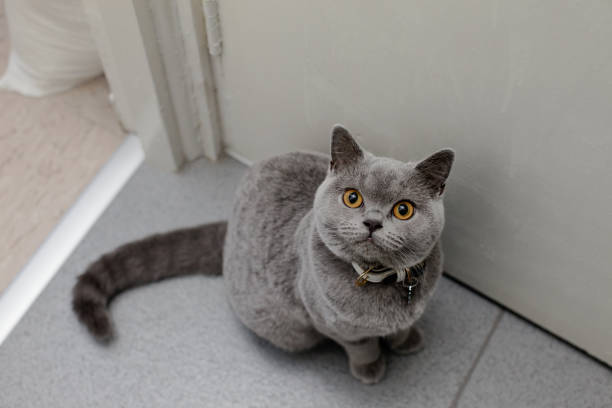Introduction: Meet the British Shorthair
There’s something truly enchanting about the British Shorthair. With their plush, teddy bear appearance and sweet disposition, they’ve captured the hearts and homes of many. These cats are a sight to behold, boasting broad cheeks, round eyes, and velvety coats. Known for their serene temperament, they may look dignified, but they’re incredibly loving and affectionate.The British Shorthair is a perfect companion for everyone, whether you’re a seasoned cat owner or a first-timer.
Table of Contents
1. Origin and History
The British Shorthair is one of the oldest and most beloved cat breeds out there. Its journey begins with the domestic cats of ancient Rome, which were brought to Britain during the Roman invasions. These resilient felines adapted beautifully to the chilly British weather and quickly became valued for their hunting prowess as working cats.
In the late 1800s, a passionate cat enthusiast named Harrison Weir played a crucial role in defining the breed’s appearance. The British Shorthair made its debut at the very first cat show held at London’s Crystal Palace in 1871.
Sadly, the breed faced near extinction during the World Wars. Thankfully, dedicated breeders stepped in to revive it, crossbreeding with Persians and other shorthairs. Thanks to their efforts, the British Shorthair has returned to its status as a cherished breed that we adore today.

2. Physical Description
- British Shorthairs are sturdy, muscular cats that fall into the medium-to-large size category. Every part of their physique exudes a blend of strength and plush elegance.
- Here are some key features:
- Head: They have a broad, rounded head with full cheeks and a strong chin.
- Eyes: Their eyes are large, round, and full of expression, typically in shades of copper or gold, though you might spot blue or green in certain coat types.
- Ears: These are medium-sized and rounded at the tips.
- Body: Their body is cobby (compact), boasting a deep chest and strong shoulders.
- Legs and Paws: Short and robust, with round paws that give them a solid stance.
- Tail: Their tail is thick at the base and tapers to a rounded tip.
- Coat: The coat is dense, short, and plush—often compared to the feel of velvet.
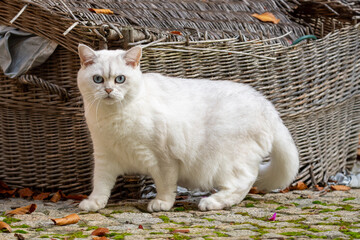
3. Personality and Temperament
When it comes to personality and temperament, the British Shorthair is like a calm thinker who truly cherishes family. These cats are:
– Calm and dignified – You won’t find them being hyperactive or seeking attention all the time.
– Affectionate, but not clingy – They enjoy your company but don’t require constant cuddles.
– Independent – They’re perfectly fine spending time alone while you’re at work.
– Loyal – They tend to form strong, lasting bonds with their humans.
– Tolerant – They get along well with gentle children and respectful dogs.
Think of them as the quintessential English gentleman or gentlewoman. They carry themselves with politeness and a touch of reserve. But once you’ve earned their trust, they open up and show their warm side.
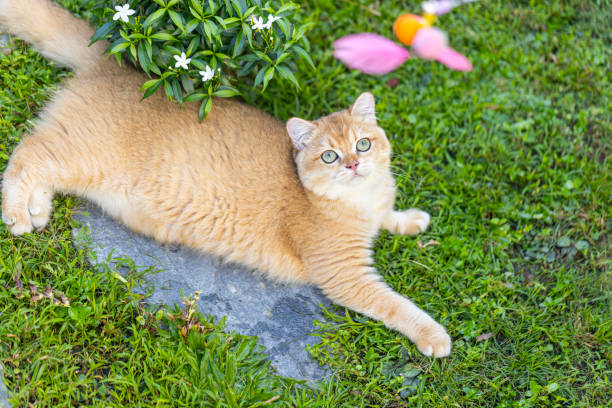
4. British Shorthair Colors and Patterns
When you think of the British Shorthair, the “British Blue” probably comes to mind first, but this breed actually showcases a delightful variety of colors and patterns, including:
Solid: Blue, black, white, cream, chocolate, lilac, and red
Bicolor: Usually featuring white
Tabby: Available in classic, mackerel, or spotted styles in shades like silver, brown, and blue
Colorpoint: Echoing the striking pattern of Siamese cats
Tortoiseshell: A mix of black and red tones
Silver and Golden Shaded
Each coat type has its own admirers, but there’s no denying that the soft texture and elegant appearance of these cats win over just about everyone.
5. Living Environment
British Shorthairs are quite adaptable, which makes them perfect for both cozy apartments and spacious homes. Here are some of their key needs:
A peaceful environment: They really thrive in calm settings rather than chaotic ones.
A safe indoor space: This is essential for their health and safety.
Perches and nooks: They love having spots to lounge and keep an eye on their surroundings.
Litter box hygiene: They definitely prefer a clean and private area for their business.
While they might not be the type to climb curtains or dash up walls, they do enjoy surveying their domain from a comfy window perch.
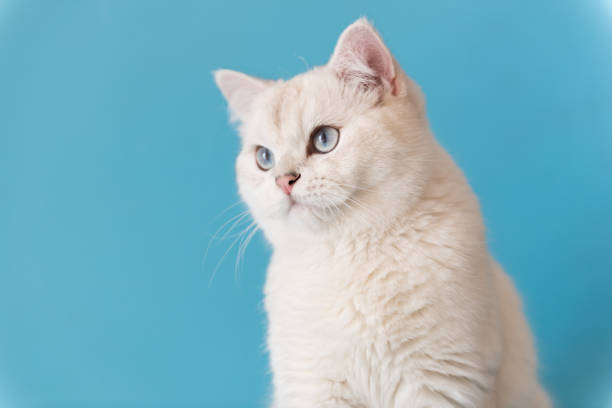
6. Diet and Nutrition
Taking care of a British Shorthair’s diet is essential for keeping them healthy and preventing obesity.
Here are some nutritional tips to consider:
– Focus on high-protein, low-carb diets
– Include wet food to help with hydration
– Opt for scheduled feeding instead of free feeding
– Keep an eye on their weight, as this breed can easily become overweight
It’s a good idea to consult with a vet for dietary advice tailored to your cat’s specific needs, especially if they’re neutered or not very active.
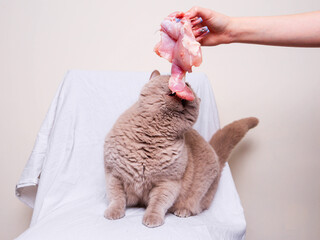
7. Grooming Needs
Even though British Shorthairs have a thick coat, they’re actually pretty easy to care for when it comes to grooming.
Brushing: Just once or twice a week should do the trick (a bit more during shedding seasons)
Baths: You won’t need to give them a bath very often
Ear cleaning and nail trimming: It’s a good idea to check these every 2–3 weeks
Dental hygiene: Aim for daily brushing or give them dental treats to keep tartar at bay
Their fur doesn’t tangle easily, but a little regular grooming goes a long way in reducing shedding and building a bond of trust.
8. Common Health Issues
While British Shorthairs are generally quite healthy, they do have a few breed-specific health concerns to keep in mind:
Hypertrophic Cardiomyopathy (HCM) – This is a hereditary heart condition that can affect them.
Polycystic Kidney Disease (PKD) – Particularly seen in those lines that have been crossed with Persians.
Obesity – Their laid-back nature can lead to weight gain if not monitored.
Dental issues – Without proper care, they can develop tartar buildup or gum infections.
Responsible breeders are vigilant about genetic issues, and regular vet check-ups can help catch any potential problems early on.
9. Lifespan
British Shorthairs are known for their impressive lifespans, often living anywhere from 12 to 20 years when given proper care. Many of these cats reach their mid-teens without any significant health problems, especially those that live indoors and enjoy a nutritious diet.
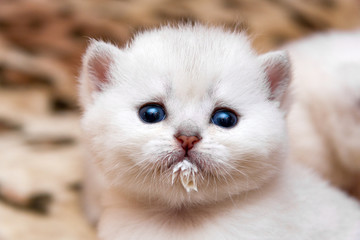
10. Exercise and Enrichment
- While British Shorthairs aren’t known for being hyperactive, they still thrive with a bit of daily exercise.
- Here are some fun ideas to keep them engaged:
- Interactive play: Think wand toys, feathers, or soft balls that they can chase after.
- Puzzle feeders: These are great for combining mealtime with some mental challenges.
- Cat trees and scratchers: Perfect for climbing and scratching to their heart’s content.
- Quiet observation zones: They really enjoy just sitting back and watching the world go by.
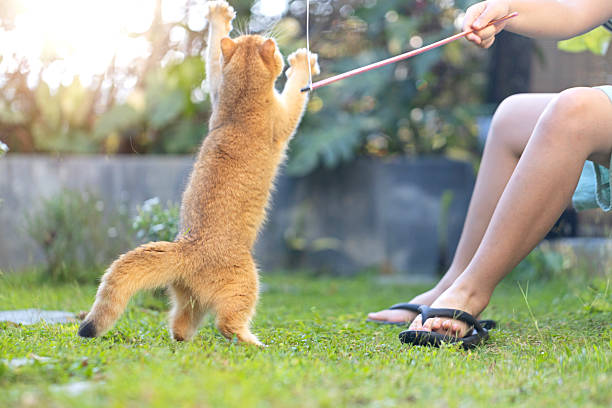
11. Training Tips
British Shorthairs are intelligent and can be trained—on their terms.
- Use treats and praise for motivation
- Short, consistent sessions
- Clicker training can work well
- Litter training is usually instinctive
Training cats to accept brushing, nail trimming, and crates early helps everyone. It makes life easier for both cats and their humans.
12. Compatibility with Other Pets and Kids
British Shorthairs are known for being:
- Gentle with kids – Especially those who understand feline boundaries
- Peaceful with dogs – When introduced slowly
- Tolerant of other cats – Particularly if raised together
They usually don’t start fights or play rough. This makes them great for homes with multiple pets, as long as they are introduced properly.
13. British Shorthair vs Other Breeds
How do they compare?
Trait
British Shorthair
Persian
Ragdoll
Maine Coon
Energy Level
Low to moderate
Low
Moderate
High
Grooming
Low
High
Moderate
High
Personality
Independent, loyal
Affectionate, calm
Docile, clingy
Playful, friendly
Appearance
Round, plush
Flat-faced
Soft and floppy
Large and rugged
14. Breed Recognition and Standards
When it comes to breed recognition, the British Shorthair is a star on the global stage, proudly holding its status with several major associations:
– CFA (Cat Fanciers’ Association)
– TICA (The International Cat Association)
– GCCF (Governing Council of the Cat Fancy)
– FIFe (Fédération Internationale Féline)
The standards for this breed highlight the importance of round features, a well-balanced body, and a wonderfully plush coat.
15. Breeding and Kittens
Breeding British Shorthairs is a serious commitment that requires both knowledge and a sense of responsibility. Typically, these adorable kittens are born in litters of 2 to 5 and take their time growing up, usually reaching full maturity between 3 to 5 years.
Here are some key points for breeders to keep in mind:
– Conduct genetic screenings for conditions like HCM and PKD.
– Start socializing the kittens from their early weeks.
– Choose breeding pairs carefully, considering both health and temperament.
– Avoid breeding before the cats are at least 12 months old.
For the best outcomes, it’s ideal to adopt kittens when they are between 12 to 16 weeks old, as they will be properly weaned and socialized by then.

16. Legal and Ethical Considerations
- The British Shorthair isn’t a restricted breed, but it’s crucial to focus on ethical breeding and purchasing practices.
- Steer clear of backyard breeders who advertise “cheap” kittens.
- Make sure to adopt or buy only from registered, responsible breeders.
- Remember to spay or neuter any cats that aren’t meant for breeding.
- And most importantly, provide a loving, lifelong home—British Shorthairs are incredibly loyal companions!
17. Fun Facts about British Shorthairs
- Did you know the Cheshire Cat was probably inspired by the round face and big smile of these cats?
- Whiskas Mascot: The popular food brand is known for featuring a British Shorthair in its advertisements.
- Quiet Companions: These cats aren’t very vocal, but they might let out a gentle “chirp” or meow when they need to.
- Late Bloomers: Some British Shorthairs take their sweet time to fully develop their looks, sometimes not reaching their prime until they’re almost 5 years old!
- Perfect for Beginners: Their laid-back personality makes them a fantastic choice for first-time cat owners.
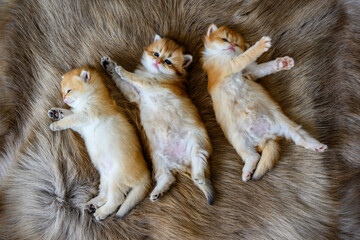
Final Thoughts
The British Shorthair is like that perfect cozy armchair you love sinking into, paired with a warm cup of tea and a captivating book on a rainy afternoon. It exudes calmness, comfort, and a subtle elegance. With their friendly demeanor, charming appearance, and knack for adapting to different environments, it’s no wonder they’re one of the most beloved cat breeds around the world.
If you’re looking for a companion for those quiet evenings or a touch of sophistication in your home, the British Shorthair is definitely a fantastic choice.

